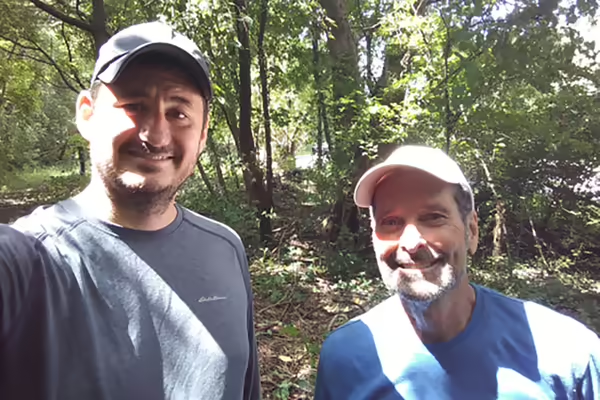
LEWISTOWN, Ill. — When certain plants get established in an ecosystem, they can choke out the more beneficial native plants. Left unchecked, those invasive species can destroy the native ecosystem and natural beauty. Local volunteers have a passion for eradicating invasive plants, and thanks to their expertise, time, and hard work, local natural areas are being restored.
University of Illinois Extension Master Naturalists serving Fulton, Mason, Peoria, and Tazewell counties have reported over 2,400 hours of volunteer restoration work since the winter of 2023. Master Naturalists have removed non-native invasive plants such as autumn olive, Japanese bush honeysuckle, multiflora rose, garlic mustard, oriental bittersweet, and many others. Master Naturalists work with partners to accomplish the clearing of non-native plants in their natural areas to help support healthy ecosystems and promote the growth of native plants.
Master Naturalist Mike McGraw shared, "I have been doing invasive removal work at Spring Creek Preserve, in Tazewell County, for two years. While I often work by myself or with just a few other volunteers, this year, I started leading once-monthly invasive-removal work days, the second Wednesday of each month. My goal, each time I work there, is simply to clear one small patch of forest of all invasives, so that the native flora, like this Broad Beech, will have a chance to thrive. I would like to think that one day Spring Creek Preserve, all 262 acres, could be invasive-free."
Master Naturalists have assisted Prairie Land Conservancy and the Peoria Wild Ones in conducting controlled burns in the spring. Many volunteers take part in Earth Day events by planting trees and native pollinator plants. In the fall, volunteers collect native seeds, processing them over the winter to spread in late winter and early spring.
“Bimonthly volunteer stewardship days at Elwood Wildlife Preserve continue to be led and participated by a majority of local Master Naturalists. There is amazing restoration progress occurring in the reconstructed prairie at Elwood and there are plans for the volunteers to start working on some oak grove timber stand improvement there this fall," said Kirsten Boesen, Stewardship Coordinator with Prairie Land Conservancy. "In addition, Elwood Wildlife Preserve, in Peoria County, has become our pilot Volunteer Land Steward Program location due to the success of consistent volunteer workdays led by Master Naturalists. We hope to grow this model to other PLC sites.”
Volunteers involved in restoration work have shared encouraging impact stories of seeing fewer invasive plants the following season, noted Extension Program Coordinator Christine Belless. Master Naturalist intern Lisa Arnett has made it her endeavor to irradiate autumn olive at Camp Big Sky.
“I do believe it becomes a mission for the volunteers who enjoy the restoration work,” Belless said . “They have been working season after season removing invasives and supporting native plant life and the natural beauty of the area. “
PHOTO: Extension Master Naturalists John Meyers and Ed Coleman are among a group of volunteers with a passion for restoring local natural areas to their thriving native ecosystem by removing invasive plants. They regularly join the crew for the thirdSunday workday at Elwood Wildlife Preserve in Peoria County.
University of Illinois Extension develops educational programs, extends knowledge, and builds partnerships to support people, communities, and their environments as part of the state's land-grant institution. Extension serves as the leading public outreach effort for University of Illinois Urbana-Champaign and the College of Agricultural, Consumer and Environmental Sciences in all 102 Illinois counties through a network of 27 multi-county units and over 700 staff statewide. Extension’s mission is responsive to eight strategic priorities — community, economy, environment, food and agriculture, health, partnerships, technology and discovery, and workforce excellence — that are served through six program areas — 4-H youth development, agriculture and agribusiness, community and economic development, family and consumer science, integrated health disparities, and natural resources, environment, and energy.